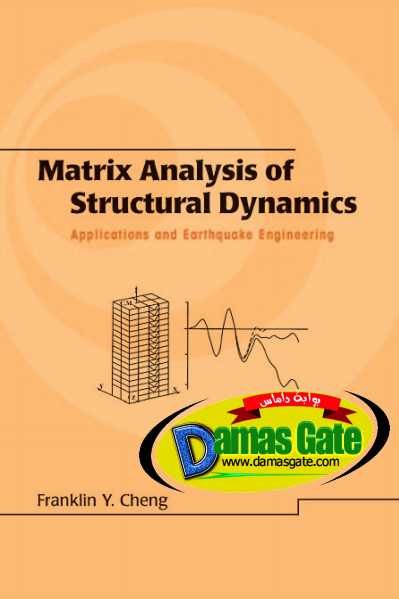Matrix Analysis of Structural Dynamics, Applications and Earthquake Engineering

OBJECTIVES AND ORGANIZATION
PREFACE
This book covers several related topics: the displacement method with matrix formulation, theory
and analysis of structural dynamics as well as application to earthquake engineering, and seismic
building codes. As computer technology rapidly advances and buildings become taller and more
slender, dynamic behavior of such structures must be studied using state-of-the-art methodology
with matrix formulation. Analytical accuracy and computational efficiency of dynamic structural
problems depends on several key features: structural modeling, material property idealization,
loading assumptions, and numerical techniques.
The features of this book can be summarized as follows. Three structural models are studied:
lumped mass, consistent mass, and distributed mass. Material properties are presented in two
categories: damping and hysteretic behavior. Damping is formulated in two types: proportional
and nonproportional. Hysteretic behavior is studied with eight models suited to different construction materials such as steel and reinforced
concrete. Loading comprises a range of time-dependent excitations, for example,
steady-state vibration, impact loading, free and transient vibration, and earthquake ground
motion. Numerical techniques emphasize two areas: eigensolution and numerical
integration. The former covers fundamental as well as advanced
techniques for five predominant methods; the latter covers five well-known integration techniques.
Structural dynamics theory is used to substantiate seismic building-code provisions. Representative codes are discussed to illustrate their similarities and differences.
This book is intended for graduate students as well as advanced senior undergraduates in civil,
mechanical, and aeronautical engineering. It is also intended as a reference tool for practitioners.
In the preparation of this text, six organizing principles served as guidelines.
1. The book functions as a self-study unit. Its technical detail requires the reader to be
knowledgeable only in strength of materials, fundamental static structural analysis,
calculus, and linear algebra. Essential information on algebraic matrix formulation, ordi-
Download
*